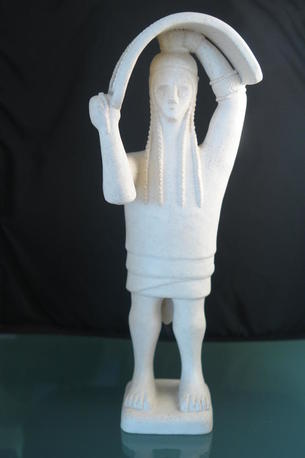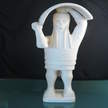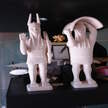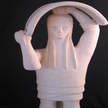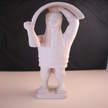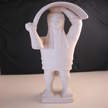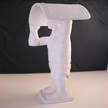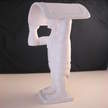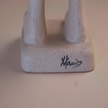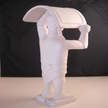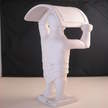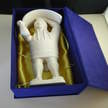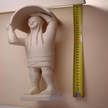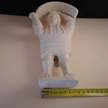Künstler: Vitaliano Manis _ Oristano
Typ: Kunsthandwerk auf Sardinien
Größe: cm 7,5 x cm 32,5
Verfügbarkeit: Nicht verfügbar
Preis: € 230,00
Gigante di Mont’e Prama di Vitaliano Manis
Gigante di Mont'e Prama di Vitaliano Manis
The Giants of Mont'e Prama are ancient stone sculptures created by the Nuragic civilization of Sardinia, Italy. Fragmented into numerous pieces, they were found by accident in March 1974, in farmland near Mont'e Prama, in the comune of Cabras, province of Oristano, in central-western Sardinia. The statues are carved in local sandstone and their height varies between 2 and 2.5 meters.
After four excavation campaigns carried out between 1975 and 1979, the roughly five thousand pieces recovered – including fifteen heads and twenty two torsos – were stored for thirty years in the repositories of the National Archaeological Museum of Cagliari, while a few of the most important pieces were exhibited in the museum itself.[3] Along with the statues, other sculptures recovered at the site include large models of nuraghe buildings and several baetylus sacred stones of the "oragiana" type, used by Nuragic Sardinians in the making of "giants' graves".[4]
After the funds allocation of 2005 by the Italian Ministry of Cultural Heritage and the Sardinia Region, restoration is being carried out since 2007 until present (As of 2012) at the Centro di restauro e conservazione dei beni culturali of "Li Punti" (Sassari), coordinated by the Soprintendenza of cultural heritage for Sassari and Nuoro, together with the Soprintendenza of Cagliari and Oristano. At this location, twenty five statues, consisting of warriors, archers, boxers and nuraghe models, have been exhibited to the public at special events since 2009.[5] The exhibition has become permanently accessible to the public since November 2011
According to the most recent estimates, the fragments came from a total of forty four statues. Those already restored and assembled are twenty five, in addition to thirteen nuraghe models, while another three statues and three nuraghe models have been identified from fragments that cannot currently be re-assembled.
Once the restoration has been completed, the majority of the finds should be returned to Cabras to be on display in a museum.[5][6]
Depending on the different hypotheses, the dating of the Kolossoi – the name that archaeologist Giovanni Lilliu gave to the statues[7] – varies between the 11th and the 8th century BC.[8] If this is further confirmed by archaeologists, they would be the most ancient anthropomorphic sculptures of the Mediterranean area, after the Egyptian statues, preceding the kouroi of ancient Greece.[9]






